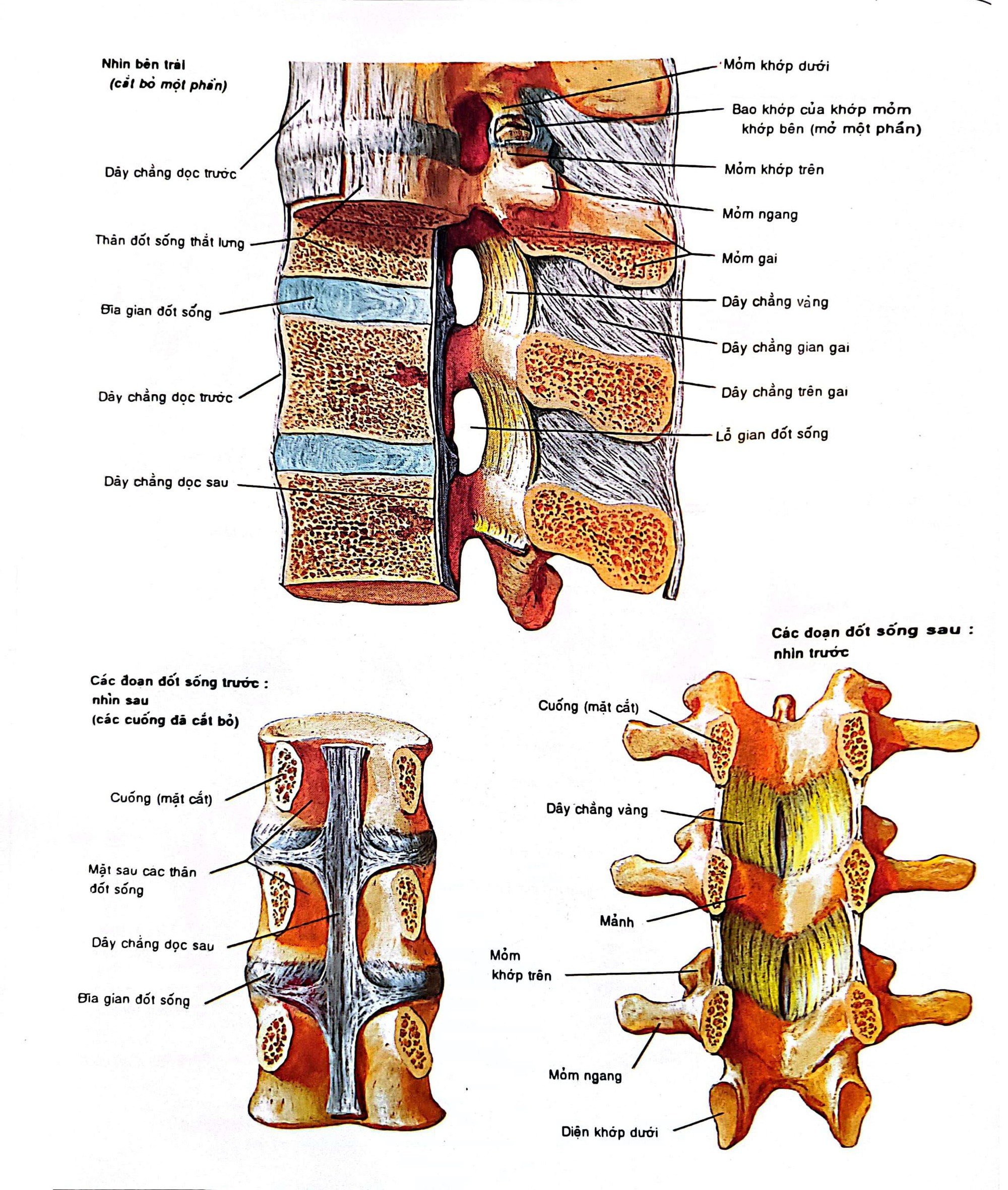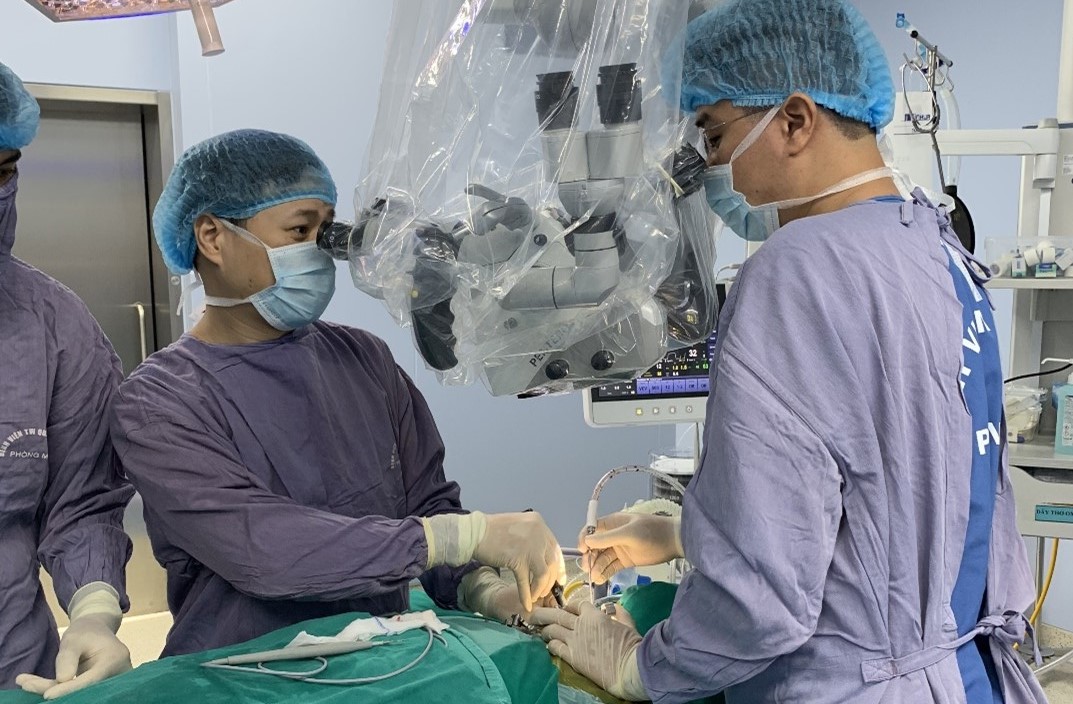1. How to treat disc herniation?
Depending on the nature of the injury, the location of the herniated disc as well as complications, the level of impact on the patient's ability to move, work and live, treatment measures are considered.
In general, treatment of herniated disc has the following groups of methods:
Medical treatment: Includes rest, physical therapy, acupuncture, acupressure, stretching, anti-inflammatory drugs, pain relievers, muscle relaxants...
- Rest : During the acute phase, the first important treatment principle is that the patient must rest in bed. Lie on your back on a hard bed, with a cushion placed in the knee area to slightly flex the knee and hip joints to reduce impact and pain on the back joints.
- Physical therapy: Includes heat methods such as hot compresses. At home, you can use water bags, roasted salt, roasted bran, hot betel leaves, hot mugwort leaves to apply to relieve pain. Be careful not to apply too hot a compress to avoid burns. Do not rub or press hard during the compress process because it can cause more pain.
In the hospital, electric currents (in the physical therapy department), acupuncture, stretching, massage, mineral baths, mud packs, infrared lamps, electrolysis, paraffin oil packs... In addition, measures such as spinal manipulation and spinal traction can be used in the treatment of the disease. Patients are prescribed a spinal brace to temporarily immobilize and limit movements on the damaged spinal area, thereby reducing the force exerted on the disc.
In addition, patients can use anti-inflammatory drugs, pain relievers, muscle relaxants, sedatives, nerve tranquilizers and high doses of vitamin B1, vitamin B6, and vitamin B12.

Image of vertebrae susceptible to disc herniation.
Minimal intervention: Some methods such as decompression of the disc with chemical nucleus pulposus, ozone oxygen, laser, radio waves... Currently, the method of using laser and radio waves through the skin to treat pain caused by herniated discs is widely applied. These methods are safe, but are only effective in mild cases, the nucleus pulposus has only protruded into the spinal canal and there are no accompanying lesions such as bone spurs, spondylolisthesis, or combined thickening of the ligamentum flavum.
Surgery : Surgery is indicated in the following cases: Herniated disc causing cauda equina syndrome; paralysis of limbs; excessive pain that painkillers have little or no effect on; after about 6 months of applying medical treatments with no results.
Surgery aims to release the compressed nerve roots, thereby reducing pain. The classic surgical method is posterior arch surgery to remove the hernia. This method is extensive, with many post-operative complications, especially pain recurrence due to fibrosis and adhesions of the old surgical wound.
Nowadays, more advanced techniques are available such as mini-open surgery; percutaneous discectomy; endoscopic nucleus pulposus removal; endoscopic nucleus pulposus aspiration... Percutaneous automated surgery is widely applied, effective, safe and with few complications. In cases of injury with spondylolisthesis causing instability, the spine can be fixed with a metal frame.
Patients after surgery for herniated discs need to pay attention to preserving the spine. Limit labor, heavy lifting, incorrect posture, and excessive spinal movement. After surgery, physical therapy and spinal rehabilitation with specialized exercises are needed.
2. Drugs for treating herniated discs
Pain relievers : In disc herniation, medications include simple pain relievers such as paracetamol; non-steroidal anti-inflammatory pain relievers such as diclofenac, meloxicam... orally, by injection or topically.
Paracetamol pain reliever is indicated for mild to moderate pain. The drug is quite safe, but if used for a long time or in high doses, it will cause liver damage such as hepatitis, liver failure... Therefore, patients should only use the drug according to the doctor's instructions.
Systemic non-steroidal anti-inflammatory drugs can adversely affect the stomach, liver and kidney function... Therefore, the drug should be taken after a full meal, and may need to be combined with drugs that protect the stomach lining to prevent side effects.
Muscle relaxants such as mydocalm, myonal are indicated in cases of spasticity of the paraspinal muscles. In addition, nerve tonics such as vitamin B1, vitamin B6, vitamin B12 can be supplemented. Even nerve pain relievers such as neurontin can also be prescribed by the doctor in some cases.

Surgery is indicated when disc herniation is severe and does not respond to other treatments...
Corticoids: Systemic anti-inflammatory steroids such as prednisolone, dexamethasone... are usually not prescribed because they cause many side effects. Except in cases of severe pain that do not respond to the above measures, high-dose, short-term intravenous methylprednisolone may be prescribed. However, the drug must be prescribed by a specialist and complications must be closely monitored.
If the patient has sciatica due to lumbar disc herniation, epidural injections of hydrocortisone may be prescribed. The course of treatment consists of 3 injections, each injection 3-7 days apart. However, epidural injections must be performed at a medical facility, under absolutely sterile conditions, by an experienced rheumatologist.
Source: https://giadinh.suckhoedoisong.vn/cac-phuong-phap-tri-thoat-vi-dia-dem-172240528143526364.htm



































































































Comment (0)